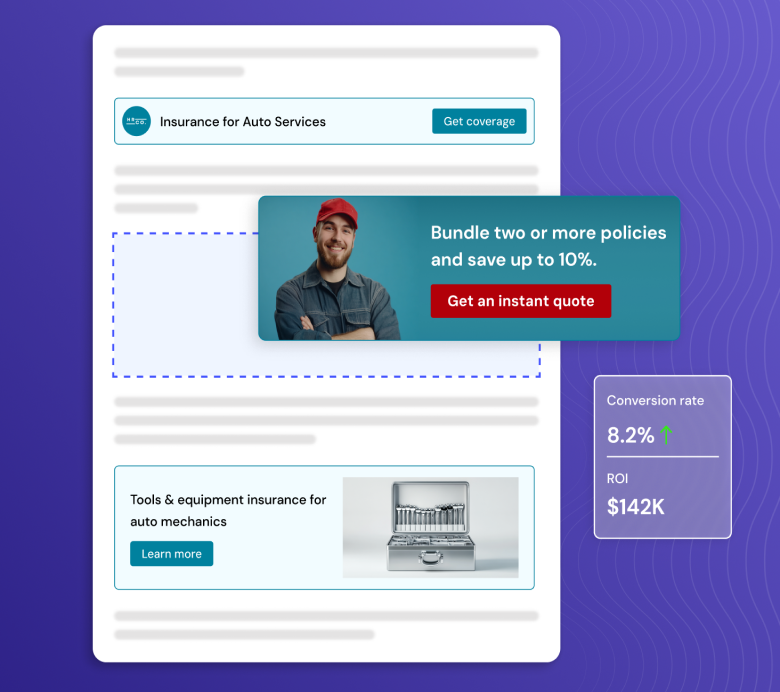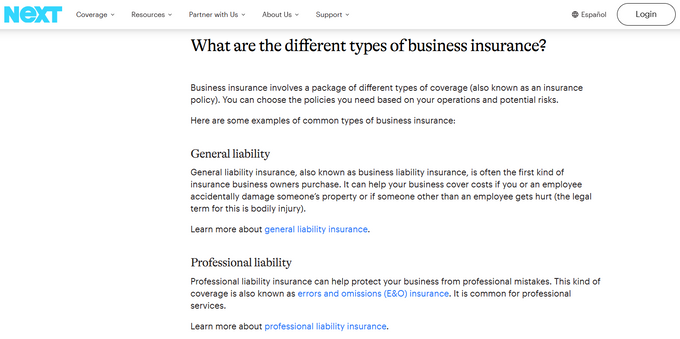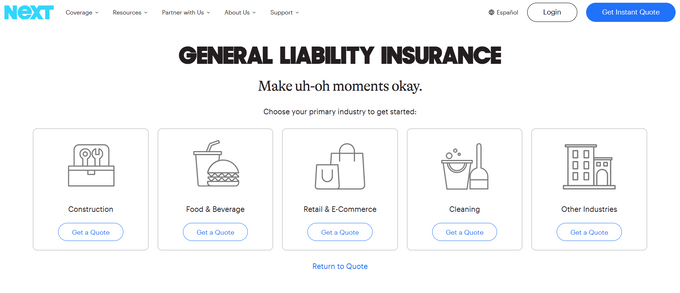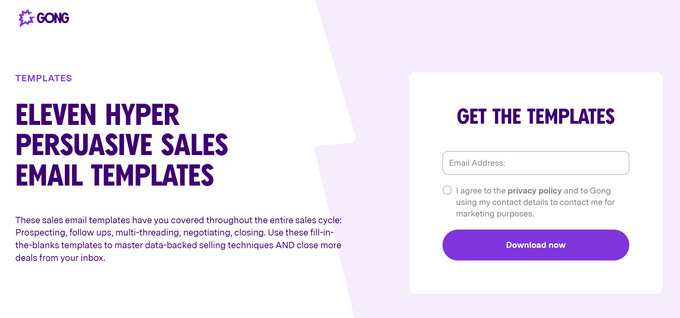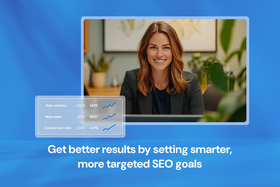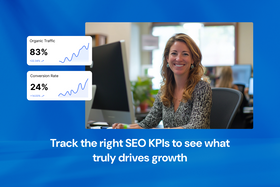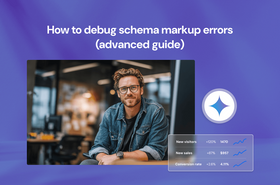SEO lead generation: 7 techniques to attract and convert visitors
Explore strategic SEO techniques that can help you build a sustainable lead generation pipeline.
Updated May 16, 2025
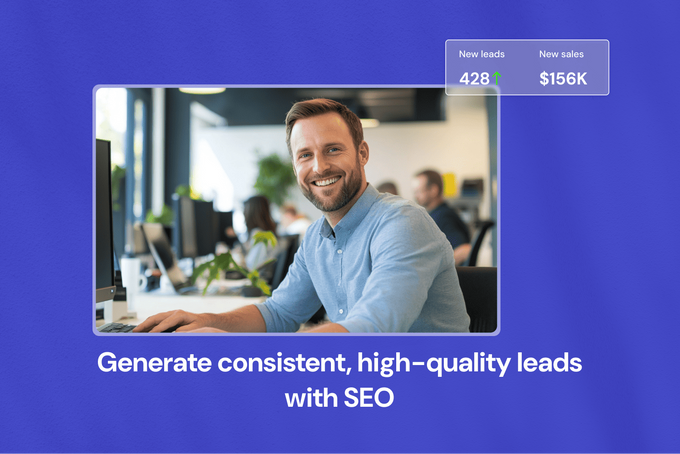
Lead generation through SEO isn't as mystifying as it might seem—it's just another type of SEO conversion. While a conversion refers to users completing desired actions on your site, like making a purchase, SEO lead generation zeroes in on capturing potential customers' information through form submissions or trial signups to create opportunities for future sales.
By focusing on SEO, you can attract high-quality leads, scale up your marketing efforts, and stay competitive. Let's explore how SEO fuels lead generation and which techniques you can use to drive growth.
Key takeaways
- As a lead generation channel, SEO can increase scale and reduce acquisition costs significantly.
- Build pages that target specific bottom-funnel keywords to capture users who are ready to convert.
- Send traffic from upper- to lower-funnel pages to convert users and maximize the potential of your upper-funnel content.
How does SEO impact lead generation?
SEO is like any other marketing channel in its ability to impact lead generation. However, it does offer unique benefits:
- Attract more qualified leads actively looking for your product/service
- Lower acquisition costs through organic reach
- Scale easily to reach a larger audience
- Provide a major traffic source for lead generation
- Boost competitiveness
» Discover the best ways to drive organic traffic.
How to generate leads with SEO
1. Identify and target bottom-of-the-funnel keywords
To generate leads through SEO, start by analyzing your keywords to identify bottom-of-the-funnel terms and create pages that target them. Bottom-of-funnel keywords should be the foundation of your SEO lead generation strategy because users using these search terms are usually ready to convert.
» Discover actionable strategies to convert blog traffic.
Let's look at an example of a company that does this well.
Next Insurance demonstrates this strategy by creating landing pages for every profession they insure—from carpenters to nail salons. These pages target lower-funnel keywords like "personal trainer insurance" and "carpenters insurance."
In SEO, it's essential to create a unique page that specifically targets what people search for in order to rank well. By building the right pages for their bottom-of-the-funnel keywords, Next Insurance practically guarantees that visitors who reach those pages have a clear intent to buy, which leads to higher SEO conversion rates.
Some examples of pages that target bottom-of-the-funnel searches and get high conversion rates include:
- Comparison pages
- Top 10 pages
- Alternative pages
- Reviews
- Landing/product pages
» Get more tips on how to create content that converts.
2. Create a lot of top-of-the-funnel content
You might assume that SEO lead generation is all about those bottom-funnel conversion pages. But the reality is that about 98% of your SEO content will end up targeting upper-funnel searches. This might sound counterintuitive for lead generation, but there's solid reasoning behind it.
While your bottom-funnel pages drive conversions, it's your broader content base that brings in the majority of organic traffic and increases site authority. By creating quality content that answers user questions across different stages of their journey, you build the traffic foundation needed for effective lead generation.
» Explore SEO customer acquisition strategies to boost traffic and conversions.
3. Add CTAs that send users further down your funnel
When it comes to SEO lead generation, your CTAs need to match where users are in their journey. On an upper-funnel page, like an article explaining different types of business insurance, you want to guide users toward lower-funnel pages using "Learn more" CTA buttons or internal links.
Once users reach these pages, you can use stronger CTAs like "Get a quote."
A lot of websites make the mistake of using the same CTAs on all their pages, regardless of the content or user journey stage. Instead, your CTAs should align with both the vertical you're targeting and where the user is in the SEO conversion funnel. By matching your CTAs and popups to the exact intent of your content, you'll see much better conversion rates.
4. Embed forms onto content pages
Form placement is not necessarily as simple as throwing a contact form on your page and calling it a day. Consider breaking down the form process into bite-sized steps by asking for only a bit of information at a time, like an email address or phone number. Then, guide the interested visitors to pages where you ask for more details.
This strategy is intended to reduce friction and gain trust bit by bit. When you're not hitting visitors with a massive form right away, they're more likely to take that first small step. More importantly, while fewer people might complete the second step with more detailed information, those who do tend to be more qualified leads.
» Generate more leads by optimizing the user journey.
5. Create lead magnets
When visitors come searching for information, you can turn that interest into leads by offering valuable content in exchange for their contact details. Think ebooks, extensive guides, or other high-value resources that directly relate to what brought them to your page in the first place (just like Gong does in the example below).
» Learn how to generate leads as a B2B.
The key here is matching your value proposition to your content's intent. For instance, if someone's reading about a specific topic, offer them a comprehensive guide that dives deeper into that same subject. You can also experiment with other value propositions like special discounts or exclusive content.
» Talk to an SEO expert about creating high-quality lead magnets at scale.
6. Offer free incentives
You can turn website visitors into leads by giving them something valuable for free. In the SEO industry, a free site audit is a classic example. But you can also provide free consultations, product trials, or demos depending on your business model.
Some businesses let users sign up for their product for free and then guide them to a paid plan once they need additional features. Whichever freebie route you take, just make sure you're providing a resource that naturally connects to what brought the visitor to a specific page in the first place.
» Explore additional conversion strategies.
7. Use your SEO content across other channels
Your SEO content doesn't have to work in isolation. All those information-rich pages you've created for SEO can actually pull double duty across your other marketing channels. For instance, you can use these same pages for Taboola campaigns or PPC, sending paid traffic to content that's already proven to work organically.
This approach extends to social media, too. By sharing your SEO-optimized content across social platforms, you're getting extra mileage from content you've already created.
Supercharge lead generation with SEO
SEO lead generation is about understanding and adapting to how users navigate their buying journey. Building a content ecosystem that serves both informational and commercial intent helps you generate more leads over time. Remember that every piece of content plays a role in your lead generation strategy. By treating each page as part of a larger strategy, you're building a more robust and effective lead-generating machine.
» Generate leads from your content pages with Entail CRO.
